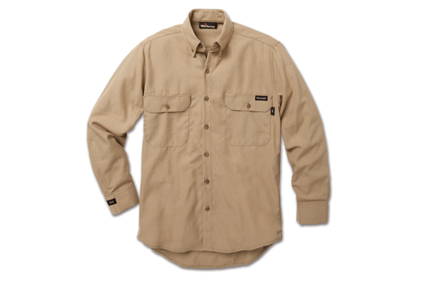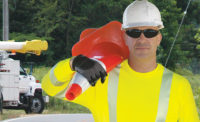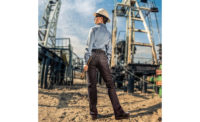What does “multi-hazard” mean?
In the FR clothing world, the term “multi-hazard” means the garment or fabric can protect against more than one hazard simultaneously. The most common hazards are flash fire and electric arc flash, but sometimes there is also a need to protect employees from small molten-metal splatter. The ability for fabrics to protect against more than one hazard has been around for years, but until recently, fabrics were typically classified into one hazard category or another depending on where they performed the best. As the fabrics’ protection level against more than one hazard improved, manufacturers started using phrases like “dual-hazard” or “multi-hazard” to differentiate their fabrics from ones that were only designed for single-hazard protection.
Examples of multi-hazard products
With the introduction of the newer Modacrylic blends like Protera®, Tecasafe® Plus and Nomex® MHP, the protection ratings for both flash fire and electric arc flash made these fabrics suitable for both hazards. With many having arc ratings of more than 8 cal/cm², they mostly fall into the critical NFPA 70E HRC 2 level while also meeting the flash-fire requirements of NFPA 2112. There have been a lot of improvements in blends, including knits, and we’ve seen the promotion of these fabrics in this newly marketed category of “dual-hazard” or “multi-hazard.”
Why is multi-hazard FR clothing important?
As mentioned previously, safety professionals realized that many workers could encounter more than one hazard during the day, and many workers are asked to perform multiple functions, as well. For example, some industries have personnel performing electrical work (arc-flash hazard) on sites that have the potential for flash-fire exposure. This can be particularly true for industries such as oil and gas drilling and servicing. There are potentially numerous contractors working at these sites who may need protection from arc-flash and flash-fire hazards, as well as from small molten-metal splatter that can come from cutting and grinding. Multi-hazard FR clothing helps to simplify the safety managers’ and procurement managers’ jobs by allowing them to purchase only one type of FR clothing or fabric to protect workers from different short-duration thermal hazards.
Do your homework
Utilizing multi-hazard workwear can be both cost effective and practical, although there are still situations where different sets of garments for different jobs might make sense. For example, wearing a lighter-weight fabric suitable for flash-fire protection with an HRC 1 rating would be much more comfortable in hot, humid areas where there is little to no probability of worker exposure to an arc flash.
Even with the availability of multi-hazard FR clothing, there can be tradeoffs regarding cost, comfort, durability, shrinkage, colorfastness, style and the actual level of protection for a given hazard. Today’s multi-hazard fabrics are much more comfortable and affordable than they used to be, which might make them a more desirable choice. Do your homework. Look at the options. Perform a wear trial. And then make the decision that’s right for your employees.



